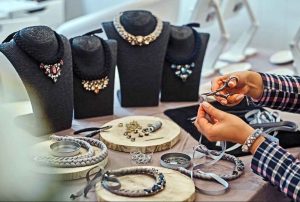Here is a Best Art , Work is Photography and Camera Artist
In order to properly review copyrighting considerations, grouping acts as a starting categorization for the tattoo industry. On one end of the tattooing artistic continuum, there are tattoo artists who only use their own style and techniques. Without going into detail on how camera artists’ styles and aesthetics were developed or influenced, the camera artists’ work can be recognised as “theirs” on their own. The tattoo artist has a stylistic monopoly in several ways. In comparison to other artistic mediums, the tattoo artist has a unique vision, experience, and skills that cannot be easily duplicated or duplicated by someone else. As a consequence, the camera artist may be categorised as a tattoo artist who uses his or her skills to express a distinct style or to further the creation of a particular aesthetic or technique. Camera operators may have their own portfolios of finished, Photographer work.
Although the tattoos in such portfolios cannot be duplicated exactly, their unique quality attributes are mainly attributable to their placement on a bespoke canvas, i.e. on one completely unique individual. Rather than the isolation of a composition, the coherent outcome is bespoke. Similarly, Photographer art is produced in precise, often non-replicable proportions. The resulting tattoo can be faithfully reproduced by a variety of other tattoo artists, but only on a different exclusive canvas. A tattoo technician may be substituted for trained technicians in any field with no inherent loss or deterioration of performance. A technician is a Photographer who is physically and professionally capable of applying different types of tattoos, but who does so without regard to style, scale, technique, aesthetic, or design. The limiting factor in this case is ability, not artistic temperament or vision. Technique vs. tradition audio camera Ondrash transmitting a special aesthetic to Horioshi III in Japan, continuing the culturally rich art of tebori, can be thought of as only two examples from millions.
People asked some question about photography studio hire Auckland . The distinction between copyrighting original works and reproductions of conventional iconography, all of which are strictly under the authority of the tattoo artist, is another notable distinction. This dichotomy, like any other in more traditionally mainstream mediums like drawing, does not imply that tattoo art falls neatly into either of the two categories. As for all creative endeavours, sources of inspiration, as well as subjectively justifiable assumptions, the same compositions branded as ‘homage’ by some or ‘theft’ by others must be critically eligible in some way. Nice artists imitate; great artists steal, as the saying goes. In practise, however, a tattoo artist who creates traditional-inspired works can be immediately and logically barred from copyrighting registration of Photographer art produced on a human canvas. Claims versus copyrights Copyright registration may serve a dual purpose. For starters, this serves as a third-party externally validated acknowledgment of bespoke or credited authorship. Content gains reputation, weight, and/or authority as a result of this. Not the least of which is the fact that sales pricing is frequently given substance. Second, keeping a copyright ownership registration could be used to prepare for cataloguing procedures when formalised legal rights are being sought. Regardless, the violator(s) must be found, engaged with, fail to honour the registration, and then be successfully prosecuted in a manner limited by the geographically relevant court(s) of law.
The amount of remuneration that can be received is calculated by the accuracy of the violator’s identity, the usage of owned material that has been registered, the set culpability through reaction, and the legal repercussions that can be achieved, which are determined in part by physical place. All of these things combine to create significant complicating factors. Security vs. acknowledgment It has been discovered that a Photographer will often use another’s designs or even finished Photographer portfolio items. While a significant portion of accredited tattoo artwork is searchable online, the sheer volume of information available from various outlets complicates attempts to credit a single point [i.e. one Photographer. Illegal use of Photographer works may be limited to written or offline portfolios, such as those shown to studio clients. Tattoos are often used as a means of personal expression and possession. It’s possible that online display of Photographer works, and thus basically public’registration,’ does not occur on purpose.
It’s possible that the person who wore it did so on purpose. These factors translate to tattoo technicians’ willingness to be very liberal in their claims of completed works and, by implication, claimed tattooing knowledge or competence when communicating directly with individual clients. In practise, the reasons or impetus for copyright ownership registration of tattoo works apply more generally to the tattoo artist and can only apply to the tattoo technician as a means of registration of completed portfolios. Although attainable remuneration or punitive measures toward copyright violators are far from uniformly predictable, a focus on digitally time-stamping both tattoo artwork and portfolios by, say, blockchain authentication is the first step toward authenticity assurances. The author now has immutable, single-source substantiation of ownership, regardless of how it is used. The ability of confidence reallocation into individual sources rather than ‘hubs’ equates to potentially ushering in a new norm of work verification, similar to the technology’s decentralised power. This is extremely important for the client to consider when choosing a method. The implications and benefits of copyright ownership that blockchain are also important for tattoo artists.






